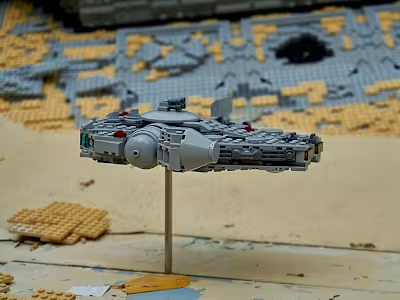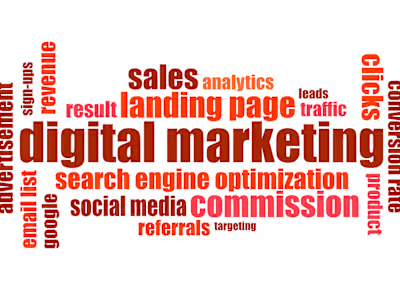How to Integrate Drones into Your Construction Business
Just a few short years ago, if you had wanted to take advantage of the benefits that drones can provide for your construction business, you would have had to do so quietly due to restrictions on their commercial use. However, new drones, new drone operating platforms, and new applications for drone technology continue to develop quickly. The ever-increasing amount of information that can be obtained from drones has become so valuable that drones are becoming necessities in many industries, including construction. In recognition of this fact, blanket restriction has given way to structured guidelines that provide for the use of drones while also addressing issues regarding public and employee safety and
privacy.
Should Your Construction Business Purchase Its Own Drones?
You may have heard about inexpensive drone models and models that can be created by a 3D printer within a matter of hours. Your company also could purchase enough cameras to
outfit each drone relatively easily and quickly. So, it is true that your construction company could acquire an entire fleet of drones quickly and inexpensively, but all you would have is a fleet of camera-equipped drones.
To fly a drone, someone in your company would need to invest the time in studying to obtain a remote pilot airman certificate with a small UAS rating and pass the applicable vetting process that has been implemented by the Transportation Security Administration (TSA).
While an existing pilot with the proper license and a recent flight review would need to complete only the part of the training related to small unmanned aircraft systems (UAS), a new pilot would have to complete additional training.
The remote pilot airman certificates are valid only for two years. Holders of the certificate then must retake the training or the air knowledge test to renew the certificate.
Businesses that want to fly drones still need FAA approval, which takes time, and, in addition,
each drone in your fleet would need to be registered separately, another time-consuming and costly process.
You should also check your company's standard commercial general liability (CGL) insurance
policy. Most policies exclude drones from the coverage. If that is the case, you can attempt to convince your insurance policy to add a rider to the policy to cover your drones. Failing that, you would have to buy a separate policy to cover your use of drones, and such policies are generally costly.
Given all of that, if you want to begin receiving the advantages of drone inspections quickly,
your best option is to subcontract your drone operations with a company that offers drone inspection services. These companies have already gone through the process. They already have a fleet of camera equipped drones, a software system for operating the drones and gathering the required data, licensed pilots, and the proper insurance.
What Services Can Drones Perform for Your Construction Company?
Mapping and Surveying
Drone inspection provides valuable services to construction companies right from the start of a project. Drones can be used to survey and map the construction site, especially
a large land development project. Two or more drones can be used to quickly map larger sites, and the drones will provide more realistic and accurate representations than aerial photography.
If your construction company has a project that requires the presence of your skilled equipment operators, but, at the same time, you also need to perform pre-construction preparation on another site to stay on schedule, an aerial inspection by drones with cameras and subsurface detectors, such as ground penetrating radar, can provide data that allows your company to program automated dozers and excavators to complete the preparation while your experienced operators remain where they are needed.
Tracking Progress
As work progresses on a site, monthly or weekly aerial photography can track the progress of the work. The resulting photographs and 360° videos provide excellent and impressive visual displays as part of progress reports to management, clients, investors, and lenders.
Drones also can be used to closely inspect the work on sites for potential problems. Drones can inspect higher walls without the need to build a scaffolding or bring in a crane. They also can fly into areas that otherwise would be difficult to reach, even with scaffolding or extra equipment. For example, drones can fly over water, a canyon, a ravine, or a busy underpass to inspect the underside of a bridge or overpass to check the work as it is being built.
Providing Repair and Maintenance Estimates
Just as an aerial inspection can check work in progress, it can also be used to determine what, if any, maintenance or repair services might be needed. Drones can easily inspect rooftops, upper levels of buildings, cornices of older buildings, or bridges and overpasses to determine if an existing structure is deteriorating due to aging. Such an aerial inspection also can help determine if a bridge or building has been damaged by a natural disaster such as an earthquake or if a bridge has been damaged by an accident, such as being hit by a semi that did not have proper clearance. A drone inspection in such situations can determine how
extensive any needed repairs might be and how long they might take. The photographs and videos can be shown to clients and insurance companies as evidence of the needed repair work.
Managing Supplies and Equipment
Because construction machinery and the metals and other materials used in the industry
are all valuable commodities that often must be left on job sites that are difficult to secure, construction companies suffer losses due to theft. Surveillance cameras are common on constructions sites for that reason, but drones provide another way of tracking materials.
If materials and machinery are tagged with RFID tags and workers have RFID tags attached to their ID cards or badges, drones can be used to track the location of supplies and machinery on the construction site and determine that an employee has possession of that company property. Drones could even determine which employee is in possession of the property. Unlike a stationary surveillance camera, if someone other than an authorized employee has possession of company property, a drone can be maneuvered to capture a clear image of any person.
In assisting with inventory management, drones combined with RFID technology could monitor the rate of usage of materials in different areas of a development site and signal
when a particular area is running low on a particular supply or construction material. Drones can even be used to transfer supplies from one area of a site to another.
Ensuring Safety on the Work Site
Combining aerial photography with RFID technology also can assist in maintaining safety on a work site. On-site cameras have been used on work sites for safety reasons and other purposes, but these cameras are stationery. Drones can be maneuvered to monitor the safety of employees working in a hazardous area from almost any angle.
If an accident should occur a drone can be sent to the area quickly to monitor the situation. Emergency personnel, the site foreman, and company management can observe the situation begin creating a plan of action before they reach the scene.
Again with a combination of RFID technology and aerial photography, a drone can also
identify the employees on the scene, allowing emergency personnel to assess those employees for additional health risks and include those in the action plan.
If images from a drone capture signs that danger is imminent, it may be possible to move
employees away from the situation.
If a drone should happen to capture an accident as it occurs, it creates a record of the events that can be used not only for insurance purposes but also to assess and possibly
find ways to improve safety practices.
In addition, employees who ignore safety procedures or who neglect to wear the proper safety equipment, for whatever reason, put other workers, such as emergency or rescue
workers, at risk. If images from a drone reveal that one or more employees regularly fail to take proper precautions on the job site, the situation can be dealt with through re-training or whatever other measures are deemed necessary to maintain a safe work site for the majority of employees.
Marketing
Once a project is completed, aerial photography from a drone can be used to show potential clients exactly what the site looks like, whether those clients might be retailers considering store fronts, businesses considering office or manufacturing space, or potential residents considering a home, condo, townhome, resort property, or apartment.
With the permission of the client, dated aerial inspections, photographs, and videos of the work in progress could also be used as part of a marketing package to demonstrate your company's attention to producing quality work while meeting construction deadlines and budgets.
Before and after videos of your company's work could make an extremely favorable impression when included as part of a presentation for a planning commission and any concerned citizens.
Advanced Uses
In more advanced uses, a drone survey of a site's topography can be merged with an architect's 3D CAD model of the project so that clients can see how the finished project
will look on the site before any construction can begin. Architects can also use a topographical survey of a site to adapt their plans to make use of attractive topographical features and create a harmonious blend between the site and the development or other construction project.
A 3D CAD model of the proposed building as it would look on site could serve as a marketing tool to demonstrate your company's advanced capabilities to potential clients. It also would go beyond an artist's two dimensional rendering, enabling your company to allow investors and local planning commissions to tour the building or apartment or office complex in three dimensions. Such a presentation might enable planning commissions and concerned citizens to better understand such precautions as built in provisions for traffic flow, and that might lead to quicker approvals for projects.
Drones already perform many important functions on constructions sites, and construction
companies rapidly come up with new functions for them. Drones expedite the gathering of data as well as the flow of equipment and supplies. They improve job site safety, and they aid in architectural design, acquiring financing for projects, and in marketing. They have become almost essential fixtures on work sites.
Like this project
Posted Sep 1, 2023
I researched and wrote about the requirements that a company needed to meet to use its own fleet of drones and how drones were being used the time.







